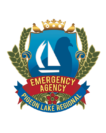EVACUATION
Preparing for potential evacuation When evacuation warnings, alerts and orders are looming, it can be a very stressful and difficult time. Here are some things you can do preemptively so that if you need to evacuate, you and your family can feel a bit more confident and assured.
Q: What’s the difference between an evacuation alert and an evacuation order? An Evacuation Alert (which is a warning issued about a potential threat before you are ordered to evacuate) may turn into an Evacuation Order (a mandatory order to evacuate) very quickly, so it’s important to be ready to go on a moment’s notice. The term Evacuation Rescind is used when the area is deemed safe for re-entry by the local authorities. These notices are issued by your local municipal authority and distributed through the media and emergency alert apps. You can learn more in the Government of Alberta Community Evacuation Guidelines.
Q: What should I do to prepare for a possible evacuation?
1. Keep the vehicle gassed up
We recommend that you have the car filled up, or at least don’t let it go below half a tank.
2. Create a quick emergency kit
You’ll need the essentials with you for you and your family’s safety and well-being. We’ve put together some guidelines around how to make vehicle emergency kit, home emergency kit and an emergency plan.
3. Prioritize those things that can’t be replaced
If you have the time, start putting some of those irreplaceable belongings and memories somewhere visible so they’re ready to grab at a moment’s notice.
4. Try minimizing the food you have in your freezer
Any leftover food in your fridge and freezer could rot if the power goes out, wreaking havoc on your home when you aren’t there. Prioritize fresh and frozen foods for the next few meals over pantry items.
5. Protect your pets, too
If you are evacuated, bring your pets and any items they will need with you. But, note that some emergency shelters may not accept pets so be prepared to arrange for your furry family members to stay with family or a pet boarding facility.
6. Take inventory
You won’t be able to take everything with you. That’s why, if you have some time and you haven’t already, take stock of your belongings. Here are some guidelines on how to take a home inventory but, when time isn’t on your side, you can do a quick inventory by taking photos or a video on your phone.
Q: I’ve been told to evacuate. What should I do to my home immediately before I leave? It’s crucial that you only do these things if specifically asked by the local municipal authorities. The Department of Public Safety and Emergency Preparedness website has some helpful pre-evacuation guidelines.
So you’re prepared, make sure you know how to:
- Turn off the water
- Turn off electricity
- Turn off the gas (only do this if specifically instructed)
We also recommend that you do the following if there’s time and it’s safe to do so:
- Close and lock all your doors and windows (your best defense against smoke damage)
- Close vents with duct tape
- Turn off any systems in your home that have outdoor intakes (stove hood, air conditioner)
- Move curtains and furniture away from the windows
- Remove as much food from your fridge and freezer as possible (try to bring food with you)
- Keep your fridge and freezer plugged in (unless otherwise specified) but take some time to unplug as many electrical devices in your home as possible
Q: Where should I go? Once it’s official and you need to be on the move, load up the car and do a quick double check of everything. Only take one vehicle (if possible) so that your family is together and to lessen road congestion.
Your local authorities may have given you a specific emergency evacuation route. Resist the temptation to take detours or shortcuts in case there are roadblocks you’re not aware of. Tune into road reports such as Alberta 511 or AMA Road Reports to keep updated on any highway closures and the safety of your route.
You may be directed to a public emergency station or evacuation centre in another town or city. Be sure to check in at this location, even if you’ve made arrangements to stay somewhere else, so authorities know you’re safe, and in case family members are looking for you.
